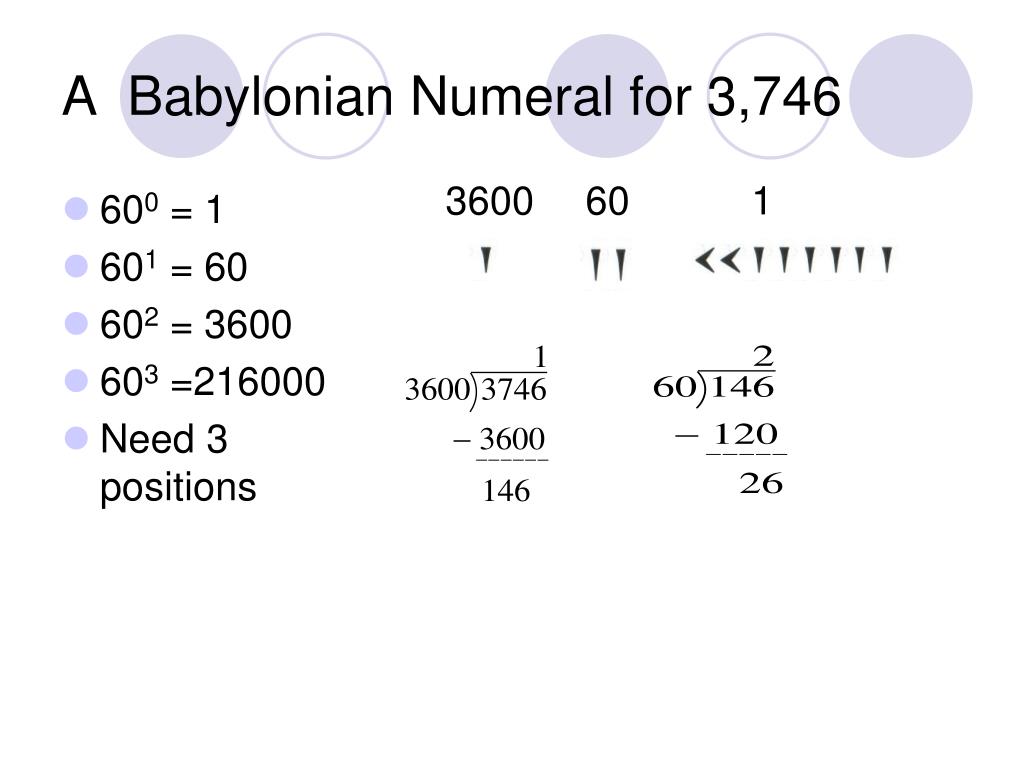

The Babylonian symbol for one and sixty are the same. We use zero to distinguish between 10 (one ten and no units) and 1 (one unit). A careless clerk might make mistakes that way, but if you were careful, it should be all right.Ī more serious problem was that to start with they had no symbol for zero. But the representation of two has the two ones touching, while the representation for sixty one has a gap between them.
123 in babylonian numerals plus#
You can now see why they piled the units up into neat piles! They needed to distinguish one plus one or two, from one times sixty plus one meaning sixty one. So the left-hand column were units, the second, multiples of 60, the third, multiplies of 3,600, and so on. The Babylonians had the same system, but they used powers of sixty rather than ten. Then you can add each column, carrying forward to the next, if necessary. If you want to add large numbers (and you've lost your calculator!) you line the numbers up so their units are in the same column. So the right hand column is units, the next is tens, the next is hundreds, and so on. We use a positional system, and our columns represent powers of ten. Surely this is very confusing! However, the Babylonians were working their way towards a positional system (see below).Ī positional number system is one where the numbers are arranged in columns.

Sixty one is sixty and one, which therefore looks like one and one, and so on. The symbol for sixty seems to be exactly the same as that for one. However, something strange happened at sixty (see below). Eleven was ten and one, twelve was ten and one and one, twenty was ten and ten, just like the Egyptians. Once they got to ten, there were too many symbols, so they turned the stylus on its side to make a different symbol. However, they tended to arrange the symbols into neat piles. Like the Egyptians, the Babylonians used two ones to represent two, three ones for three, and so on, up to nine. I am using a yellow background to represent the clay!Įnter a number from 1 to 99999 to see how the Babylonians would have written it, or enter a number to count with. This explains why the symbol for one was not just a single line, like most systems. The Babylonians writing and number system was done using a stylus which they dug into a clay tablet. Eventually it was replaced by Arabic numbers. It is quite a complicated system, but it was used by other cultures, such as the Greeks, as it had advantages over their own systems. It started about 1900 BC to 1800 BC but it was developed from a number system belonging to a much older civilisation called the Sumerians.


 0 kommentar(er)
0 kommentar(er)
